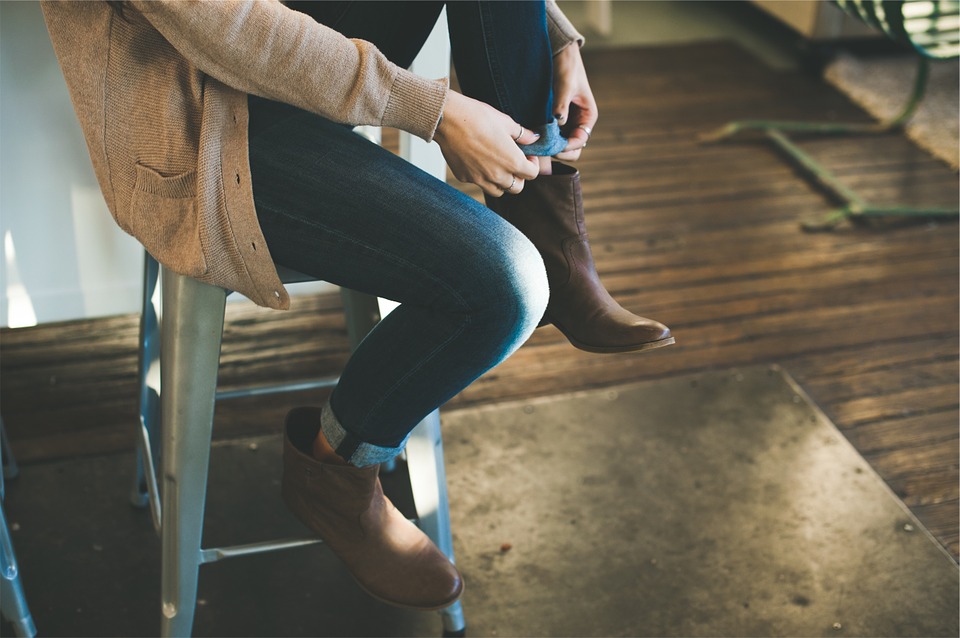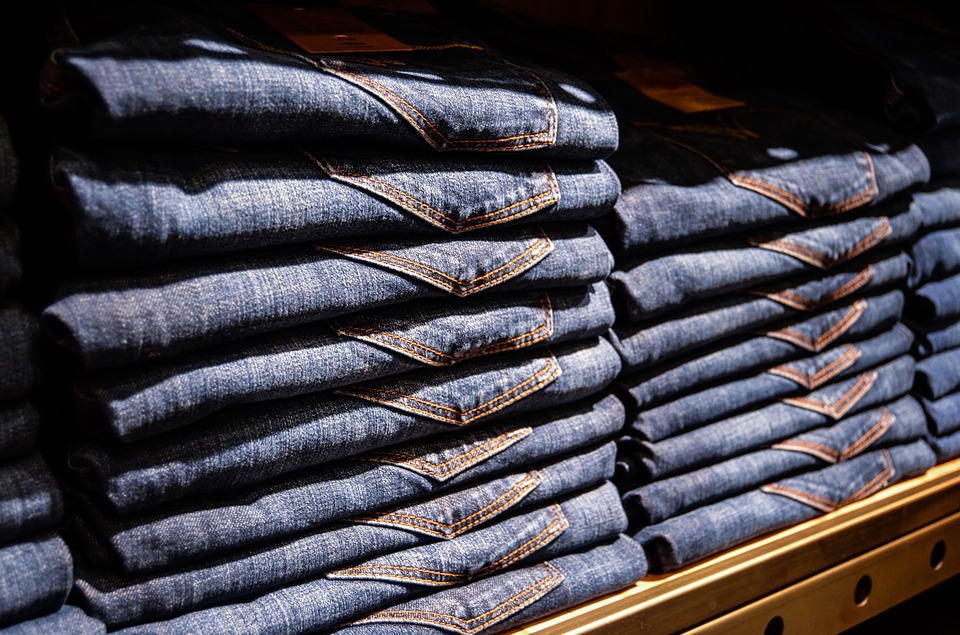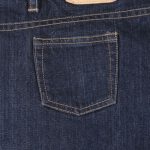Jeans are the preferred choice of pants by millions of men and women. Characterized by a denim construction, they offer the perfect balance of style, durability and comfort. Like all garments, though, even jeans are susceptible to their own problems. The good news is that you can avoid these problems by taking some basic precautions. In this post, we’re going to list the nine most common problems with jeans and how to avoid them.
#1) Bottom of Dragging on the Ground
Allowing the bottom of your jeans to drag on the ground is never a good idea. Over time, the bottom will begin to fray and unravel, creating serious damage that’s difficult to repair. You can prevent this from happening, however, by rolling up the bottom of your jeans. Simply roll up about 1/2 to 1 inch of fabric at the bottom of each leg. If it’s not secure enough to stay in place, create a second roll over the existing roll so that it’s tighter.
#2) Staining Shoes
Have you purchased a new pair of jeans, only to discover that they stained your shoes the first time you wore them? While not all jeans suffer from this problem, it’s still more common than you’d think. The phenomenon occurs when the indigo dye within a pair of jeans is released and absorbed into the shoes. There are a few ways to prevent jeans from staining your shoes, though, beginning with choosing washed denim. Unlike raw denim, washed denim has already been washed, so it’s less likely to bleed colors. Additionally, go ahead and wash your jeans once or twice before wearing them to help remove any loose dye that hasn’t fully set.
#3) Wrinkles
Wrinkles aren’t as common in jeans as other garments. This is due to the fact that jeans are made of denim, and denim is heavier and more durable than most other textiles. Nonetheless, jeans can still develop wrinkles, so you should take some basic precautions to keep them smooth and free of creases. Removing your jeans from the washing machine and clothes dryer as soon as they are finished will discourage wrinkles from forming. Another idea is to spray your jeans with a wrinkle-protectant product before wearing them.
#4) Too Tight in the Legs
Many people complain their jeans are too tight in the legs. A pair of jeans may fit perfectly in the waist. If they aren’t wide enough in the legs, though, they’ll feel restrictive and uncomfortable to wear. So, how do you prevent this from happening with your jeans? Pay attention to the cut. Jeans with a straight-leg cut are designed to run narrow through the legs without tapering or otherwise widening. Jeans with a skinny cut are designed even slimmer, as they become narrower through the legs. In comparison, relaxed or baggy cut jeans may actually widen towards the bottom of the legs. Check the cut and choose a style that’s going to offer you the highest level of comfort and satisfaction.
#5) Worn Knees
Some jeans are either designed or become heavily worn in the knees. In fact, you may notice entire patches of denim missing from this area. Normally, only distressed denim jeans are sold with this style. By choosing a different type of jeans, you can protect the knees from wear. However, it’s also important that you avoid any unnecessary friction on the knees. Kneeling with your knees pressed against the ground will other contribute to further wearing of the knee areas.
#6) Fading
Just because your jeans have a dark indigo color now doesn’t necessarily mean they’ll have this same color a year from now. Jeans, like all clothes, have a tendency to fade overtime. This occurs when the denim’s dye becomes released from the fabric, thereby creating a lighter, faded color. To protect your jeans from fading, turn them inside out when washing them. Additionally, consider washing your jeans on occasion with nothing more than 1 cup of vinegar and cold water. Vinegar works to set the denim’s dye. When your jeans are finished washing, the color should be better protected from fading and bleeding.
#7) Sagging
Of course, sagging is another common problem associated with jeans. You may discover your jeans falling from your waist, for example, forcing you to pull them back up by hand. The easiest way to avoid sagging is to choose jeans in the right size. A pair of good-fitted jeans shouldn’t fall from your waist when worn. If this isn’t an option, consider wearing a belt. Even if your jeans are too big, a belt will create a tighter fit around your waist, thereby preventing them from falling down.
#8) Stiffness
Have you noticed that your jeans feel stiff after washing them? It’s difficult to wear a pair of jeans when they suffer from this problem. The hard texture makes them uncomfortable to wear. To soften your jeans, make sure your home’s water doesn’t suffer from hard mineral buildup. If your home has hard water — meaning there’s a significant amount of hard water minerals present — your garments may feel hard or chalky after you remove them from the washing machine. Alternatively, washing jeans with vinegar has been shown to soften the denim fabric and make them more comfortable to wear.
#9) Few Color Choices
When shopping for jeans at retail and department stores, you probably won’t have many colors from which to choose. Most local stores such as these sell jeans in two colors: indigo and light blue (and a few shades thereof). While these colors are perfectly fine, they don’t offer much in terms of personal expression of one’s style. A solution is to order your jeans from MakeYourOwnJeans. Not only can you specify your body measurements to ensure a perfect fit, but you can also choose from one of dozens of colors. Whether you prefer indigo, light blue, red, green, blue or yellow, you can order jeans in a wide range of colors.












